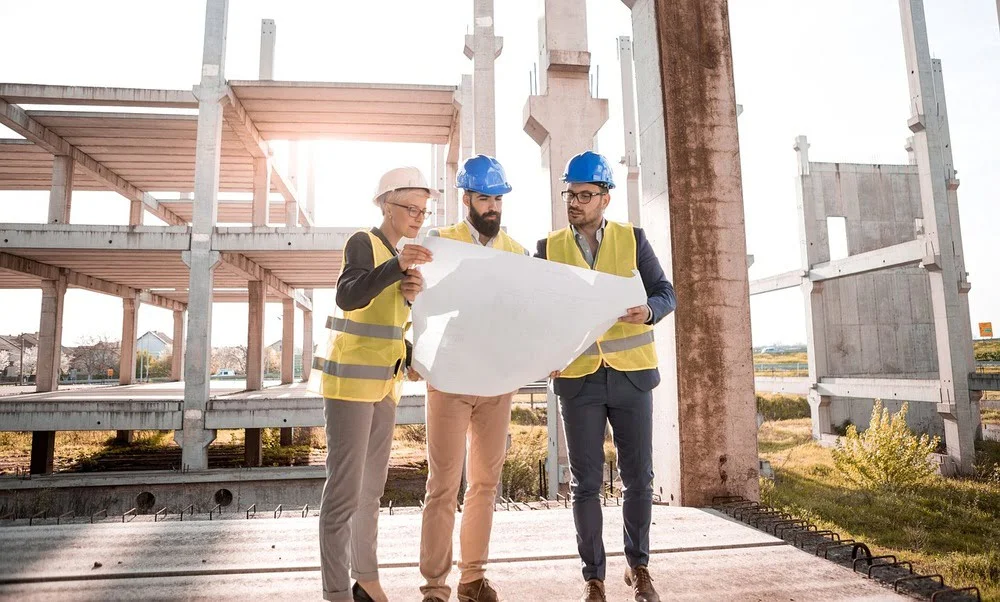
There are many ways the construction industry can attract a broad range of talent and expertise while driving innovation and growth in the future. One of these ways is by promoting diversity and fostering an inclusive environment. By doing so the construction industry will benefit from new ideas and creativity if more women are employed. In this article, we’ll take a look at the importance of women in the construction industry in today’s world.
Women’s involvement in the construction industry has a long history. It is generally perceived that a woman’s primary duty was to care for her family, and leave it up to her husband to be the provider. Despite this perception, women were known to work as laborers, such as hauling materials and mixing mortar. During the Industrial Revolution, women shifted to working in factories that produced construction materials. However, it wasn’t until World War II that women’s participation in the construction industry significantly increased, with many taking on roles in carpentry, welding, and pipefitting.
Since the 1960s and 1970s, women’s groups and labor unions have advocated for equal employment opportunities and better working conditions for women in construction. While progress has been made, women still face significant barriers, such as gender stereotypes, harassment, and lack of access to training and career advancement opportunities. Despite these challenges, women continue to work in various construction trades today, paving the way for more opportunities and progress in the industry.
The construction industry has long been dominated by men, with women comprising only a small percentage of the workforce. This lack of diversity not only limits the industry’s potential for growth but also perpetuates gender stereotypes and biases. To achieve a more inclusive and thriving industry, it is essential to increase diversity and representation, particularly among women and underrepresented groups.
One way to promote diversity in construction is by providing equal access to training and career advancement opportunities for all workers. This includes addressing gender stereotypes and biases that may discourage women from pursuing careers in construction and providing mentorship and support for those who do. Additionally, companies can establish more family-friendly policies and flexible work arrangements to accommodate the needs of all workers, particularly those with caregiving responsibilities. By creating a more supportive and inclusive work environment, the construction industry can attract and retain a diverse range of talented and skilled workers, contributing to the growth and success of the industry as a whole.
Women-owned construction companies are gaining momentum in the industry, and for good reason. When it comes to securing government contracts, having a diverse pool of contractors is increasingly important. Government entities, including federal, state, and local agencies, are looking to work with businesses that reflect the diversity of their communities. Women-owned construction companies offer a unique perspective and experience that can help contractors stand out in the bidding process.
Research shows that diversity in the workplace leads to better decision-making, improved creativity, and increased profitability. Women-owned construction companies bring a fresh perspective to the industry, and their unique experiences and ideas can help contractors secure more government contracts. Additionally, many government entities have set goals for working with small, minority-owned, and women-owned businesses.
There are several states in the US that have policies and programs aimed at supporting women in the construction industry. For example, the state of California has a Women in Trades Program that provides training and support to women who are interested in pursuing careers in construction. Similarly, the state of New York has a Women Builders Council that advocates for women-owned businesses in the construction industry and provides networking opportunities and resources. The state of Oregon has a program called Building Women that offers training and support for women in the construction trades. Other states with policies and programs aimed at supporting women in construction include Minnesota, Iowa, and Washington. These initiatives aim to increase the representation of women in the construction industry and provide them with the tools and resources they need to succeed.
Studies have shown that women-led companies have higher levels of employee satisfaction, lower turnover rates, and better project outcomes. This can translate to higher quality work, improved productivity, and better project management. Partnering with women-owned construction companies can lead to increased success in the government contracting process, benefitting both contractors and the communities they serve
In conclusion, the rise of women-owned construction companies is reshaping the industry’s standard for success and advancing gender equality. Despite being historically male-dominated, the construction sector must diversify and become more inclusive to flourish. This entails tackling gender stereotypes and biases, ensuring equal access to training and career advancement opportunities, and implementing family-friendly policies and flexible work arrangements. By promoting diversity and fostering an inclusive environment, the construction industry can attract a broader range of talent and expertise, driving innovation and growth in the future.